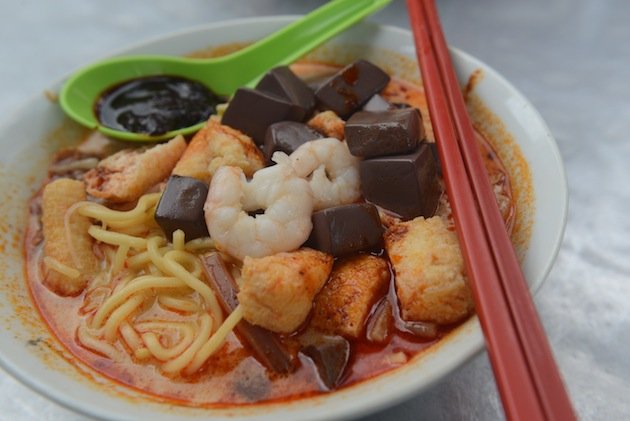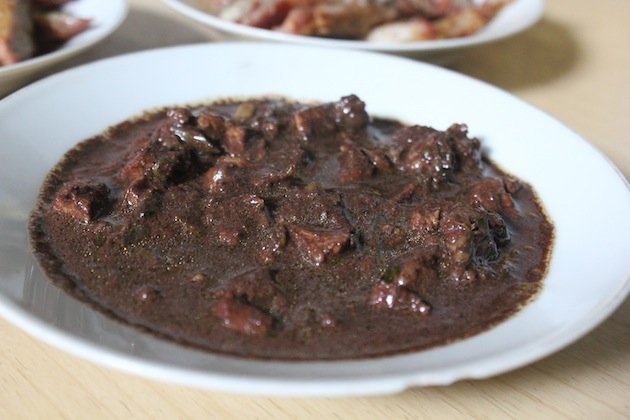
Five Bloody Street Food For The Adventurous
By Tris Marlis - Wednesday, May 08, 2013
In many parts of the world, especially Asia, blood is a common street food ingredient prepared in various ways. As horrid as it sounds, it is a matter of preservation to use all parts of an animal, as well as a way to enrich the flavour of a dish. Just don’t tell your haemophobic friend.
The most common form of edible blood is congealed blood tofu. In Malaysia, blood tofu is the key ingredient to curry mee, and often comes in generous amount. The broth of curry mee is rather light. Thus, it relies on the spoonful of curry sauce and pig’s blood to enrich the flavour of the dish. Pig’s blood has stronger taste compare to chicken’s blood, it is also richer and denser. If pig’s blood texture is like firm tofu, then chicken’s blood is similar to soft tofu.

Blood is also often incorporated as stuffing for blood sausages, which is available throughout the globe with different adaptations. In Vietnam, the blood sausage is known as Doi Huyet. Coagulated blood is chopped and mix with grounded pork, spices, herbs and sometimes shrimp paste too. The end result is rich in flavour and texture, best served with a side of fish or chilli dipping sauce.
In Indonesia, there is a dish called Saksang, a signature of the Batak tribe from Sumatra. To make this dish, pork is stewed in its own blood. The role of blood in this dish is to add colour and flavour to the meat. To get rid of the subtle metallic smell (blood is rich in iron), Andaliman is added. It is a type of forest pepper similar to Szechuan peppercorn, but without the numbing effect. The end result is a dark maroon colored stew, tender meat with rich savoury gravy that has been thickened with the blood.

Another popular street food with pig’s blood is 猪血糕 (zhu xie gao) from Taiwan, which is as notorious as the stinky bean curd. Pig’s blood is mixed with glutinous rice and steamed to form a cake which is served in a hot pot or deep-fried. The latter version still retains the chewiness of glutinous rice with a coating of peanut for crunch. The sweet chilli sauce on the side works great to cut through the richness of the ‘bloody’ cake.

If all of the above mentioned do not sound challenging enough, you might want to head to Chiang Mai and find this – Luu – fresh pig’s blood with crispy noodle. Fresh pig’s blood is first chilled, then toss with pig’s offal and serve with crispy noodle. Herbs like lemongrass and lime leaves are used to mask any foul taste from the blood. Be warned that first-timers may find this dish bitter and hard to swallow.
Blood might not sound appealing nor appetising, but when it’s done right it can be appealing. Besides, blood is also said to contain high protein, iron and zinc. It is an oddity that some find it bloody good, and for good reason.


